Pathways to Black & Indigenous Solidarity
Community
Consultation Sessions report
Indigenous Youth Roots
Black & Indigenous Solidarity Program


1
2
3
4
5
6
7




Community
Indigenous Youth Roots
Black & Indigenous Solidarity Program


1
2
3
4
5
6
7



Indigenous Youth Roots (IYR) stands as a leading national, Indigenous nonprofit organization with a rich history of empowering Indigenous youth and communities across Canada. The organization offers programming, grants, and opportunities grounded in Indigenous ways of knowing and being. As a national Indigenous organization, IYR collaborates with communities to strengthen and amplify the voices of Indigenous youth through these experiences. Indigenous Youth Roots upholds solidarity as a core principle for the well-being and empowerment of Indigenous and BPOC youth leaders. The organization's Black & Indigenous Solidarity Program operates out of the Community Relations and Solidarity Department, which provides meaningful spaces for connection, community building, and solidarity between Indigenous and nonIndigenous youth.
The Community Relations and Solidarity Department strives to foster relationships between youth of different marginalized communities and to emphasize the importance of engaging in active allyship.
The Community Relations and Solidarity Department’s focus on Black & Indigenous Solidarity (BIS) enables the facilitation of spaces for Black, Indigenous, and Afro-Indigenous youth to identify the necessities, roadblocks, and avenues for solidarity among each other This program highlights the numerous connections between Black and Indigenous communities through an exploration of history, systems of oppression, and pathways to liberation. The BIS Program aims to establish enduring ties of solidarity and allyship between Black, Indigenous, and AfroIndigenous youth while acknowledging the inherent intersection of Indigenous sovereignty with Black liberation.
In pursuit of this overarching goal, the team decided to leverage the knowledge of youth and community to design a culturally relevant, intersectional, and impactful program that addresses the needs and aspirations of Black, Indigenous, and Afro-Indigenous youth.
Ultimately, the BIS Program endeavors to establish enduring bonds of solidarity and allyship among Black, Indigenous, and Afro-Indigenous youth while recognizing the inherent intersection of Indigenous sovereignty with Black liberation.
Solidarity between Black (African, Caribbean, and Black) & Indigenous (First Nations, Métis, and Inuit) communities is essential in the fight towards collective liberation. Across the globe, attempts at the destruction and erasure of cultures, traditions, languages, food systems, family structures, lands, and medicines of Black & Indigenous peoples have been projected from dominant societies and cultures.
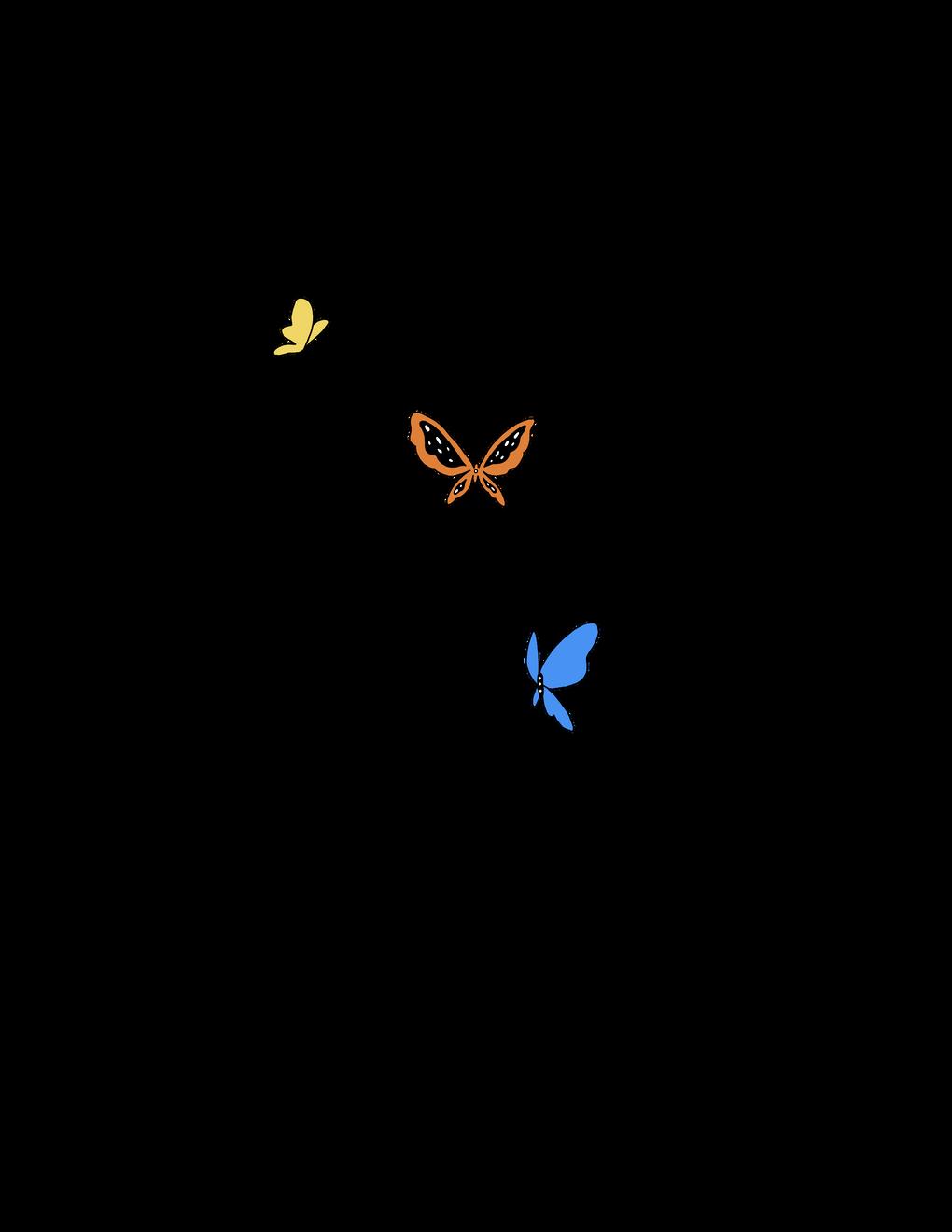

The mechanisms of colonization are mirrored worldwide; from Turtle Island, to Africa, the Caribbean, across territories inhabited by Black, Indigenous, Afro-Indigenous, and other people of color since time immemorial. These efforts of erasure persist through institutions that aim to divide and conquer communities by imposing external definitions of identity that diverge from the understandings and representations of marginalized communities. The violence of colonialism is multifaceted, thus decolonization necessitates a collaborative, community-centered response rooted in strength, love, solidarity, and reclamation.
Black, Indigenous, and people of color (BIPOC) find power in numbers and draw strength from the convergence of diversity, ancestral wisdom, skills, resilience, and joy in solidarity. Fostering solidarity among different communities requires the creation of community-centered spaces and platforms for dialogues about culture, family, food, land, kinship, and all aspects contributing to their identities.
By creating spaces for connection, these relationships can be cultivated and strengthened. Spaces dedicated to Black & Indigenous Solidarity, equip youth with the skills to engage in equitable and meaningful allyship & solidarity, amplifying voices through tools for youth advocacy, promote lateral love within communities, and explore new avenues for self-love, joy, community care, and rest.
If you, the reader, are interested in exploring the cultural and historical significance of Black and Indigenous Solidarity further, please refer to the note at the end of this report.
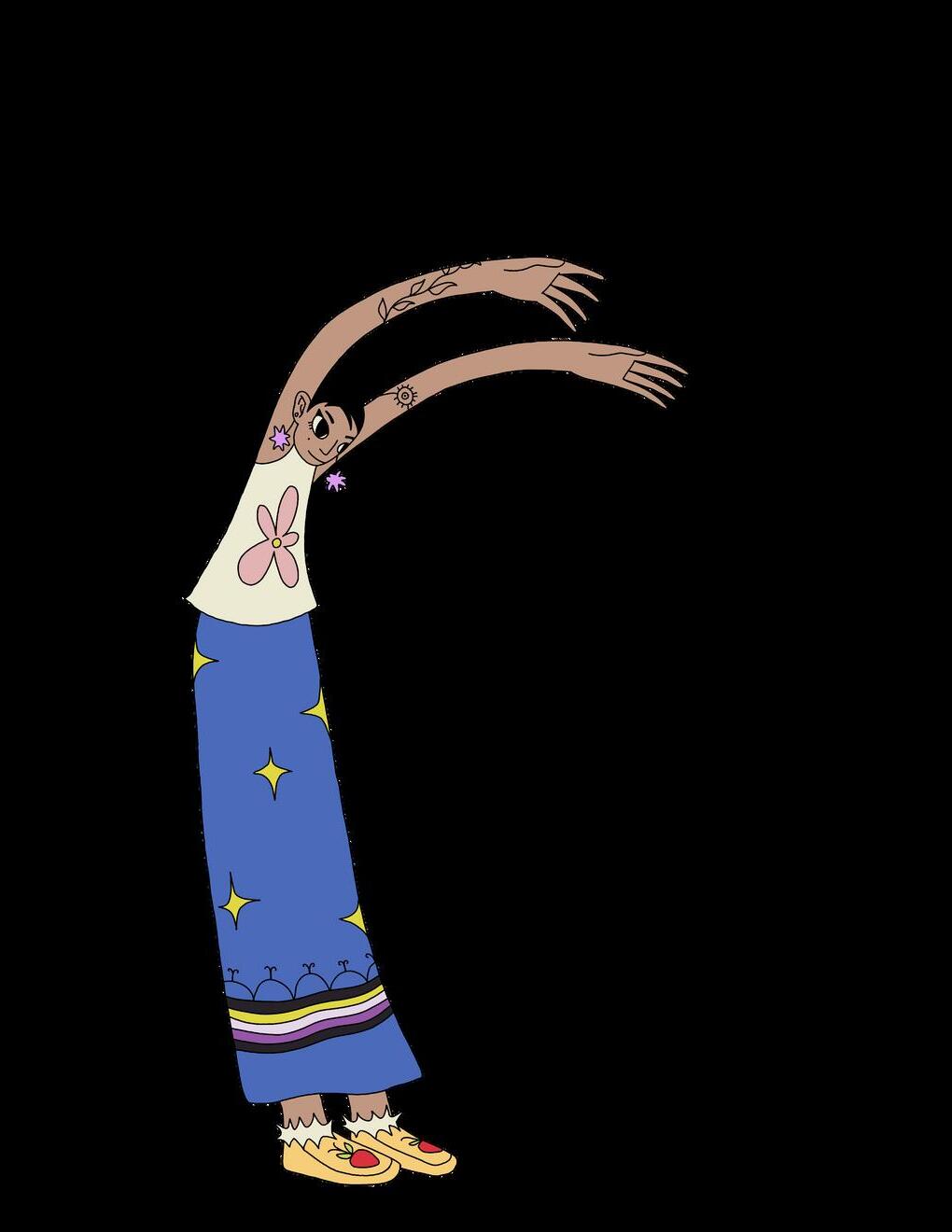
Further details about implementing this praxis are provided throughout this report.
In exploring pathways for the creation of radical, innovative programming that adequately and accurately responds to the needs of youth, it becomes evident that innovation arises from community consultation. Ensuring that solidarity programming responds to the specific needs of community requires a shift from inclusion to centering Black, Indigenous, and Afro-Indigenous youth voices at the core of program development.
Discussing solidarity as a concept and embodying it as a way of life involves the integration of Indigenous worldviews and ways of being, inherently rooted in collaborative, community-based decision-making. The Community Consultation Sessions created a space for Black, Indigenous, and Afro-Indigenous youth to identify the necessities of, roadblocks to, and pathways for, solidarity between their communities
Employing an anti-oppressive, healing, and strengths-based praxis allowed participants to pinpoint key concepts relating to their realities as Black, Indigenous, and Afro-Indigenous youth.
The goal of the Community Consultation Sessions was to create a space to share information, knowledge, and experiences of communiy to embody this wisdom in the creation of future solidarity programming administered by the Community Relations and Solidarity Department (CRSD)

The intention was to share publicly for value-adjacent organizations to utilize in their own solidarity programming.
In this report, the learnings from each Community Consultation Session have been summarized into best practices for Black and Indigenous Solidarityfocused youth programming. Throughout the report, readers will learn about the values and processes upheld during the Community Consultation Sessions, as well as glimpse programming needs outlined by Black, Indigenous, and AfroIndigenous youth. It is hoped that this report can serve as a guide to inform and inspire other organizations to implement Black and Indigenous solidarity programming

y
For each session, the Community Relations and Solidarity Department , ns included group guidelines,
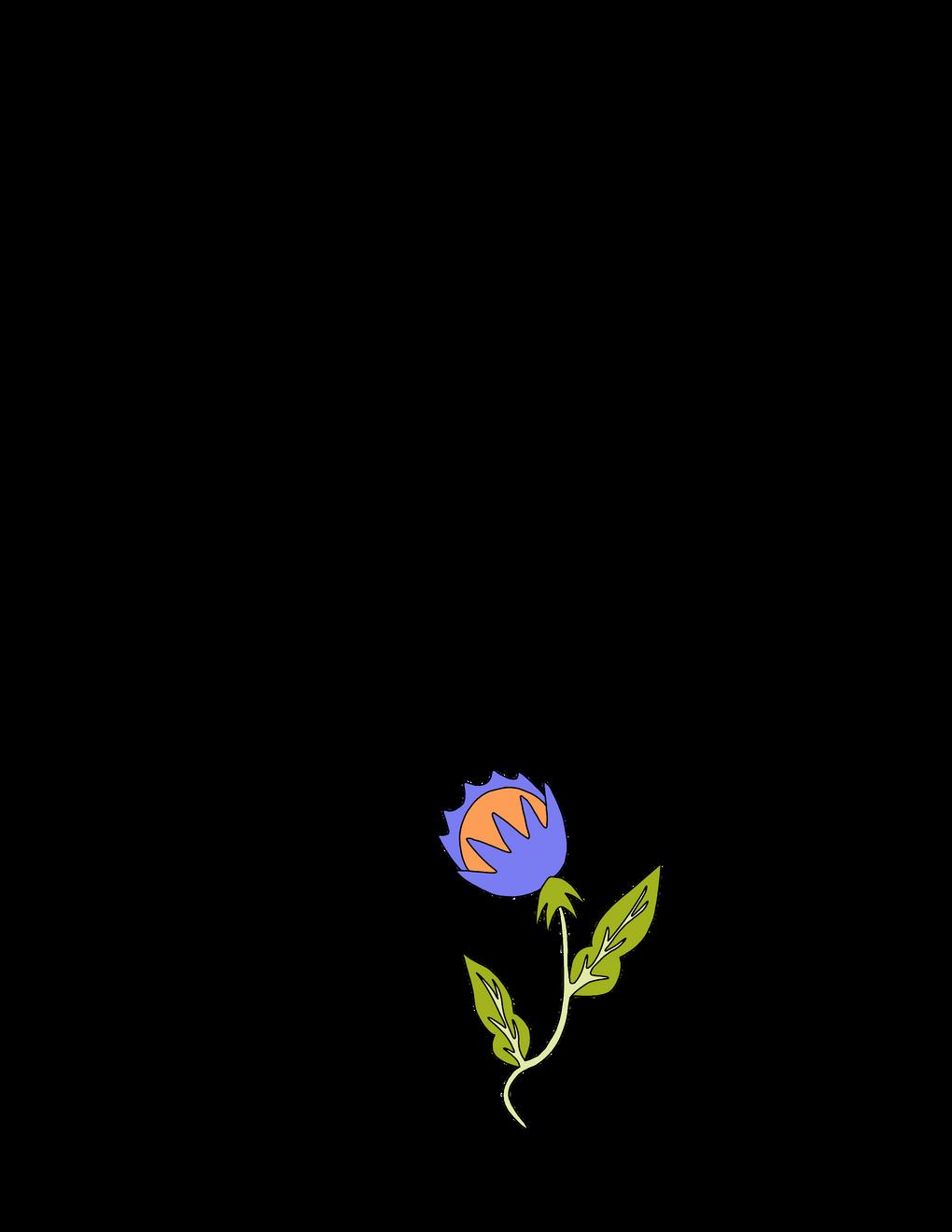
acknowledgment of the land, trigger warnings, and an avenue for communicating access needs/preferences
While the content and discussions were significant, sessions also prioritized time and space for joy and rest. Each session concluded with a somatic exercise led by one of the holistic supports. During in-person sessions, the Knowledge Keeper facilitated the opening and closing of the space in a respectful manner.
Indigenous medicines such as tobacco, sage, sweetgrass, and cedar were provided for all youth to choose from, fostering a sense of safety and connection to their cultures, traditions, and ancestors.
their knowledge and experiences. Financial compensation was deemed crucial for meeting the material needs of youth, enabling them to fully engage as themselves.

Additionally, bay leaves and lavender were made available to youth. The Knowledge Keeper regularly smudged the space to uphold the physical, mental, spiritual, and emotional wellbeing of the participants, honoring their experiences and knowledge with respect and gratitude. Honorariums were provided to all participating youth, underscoring the importance of
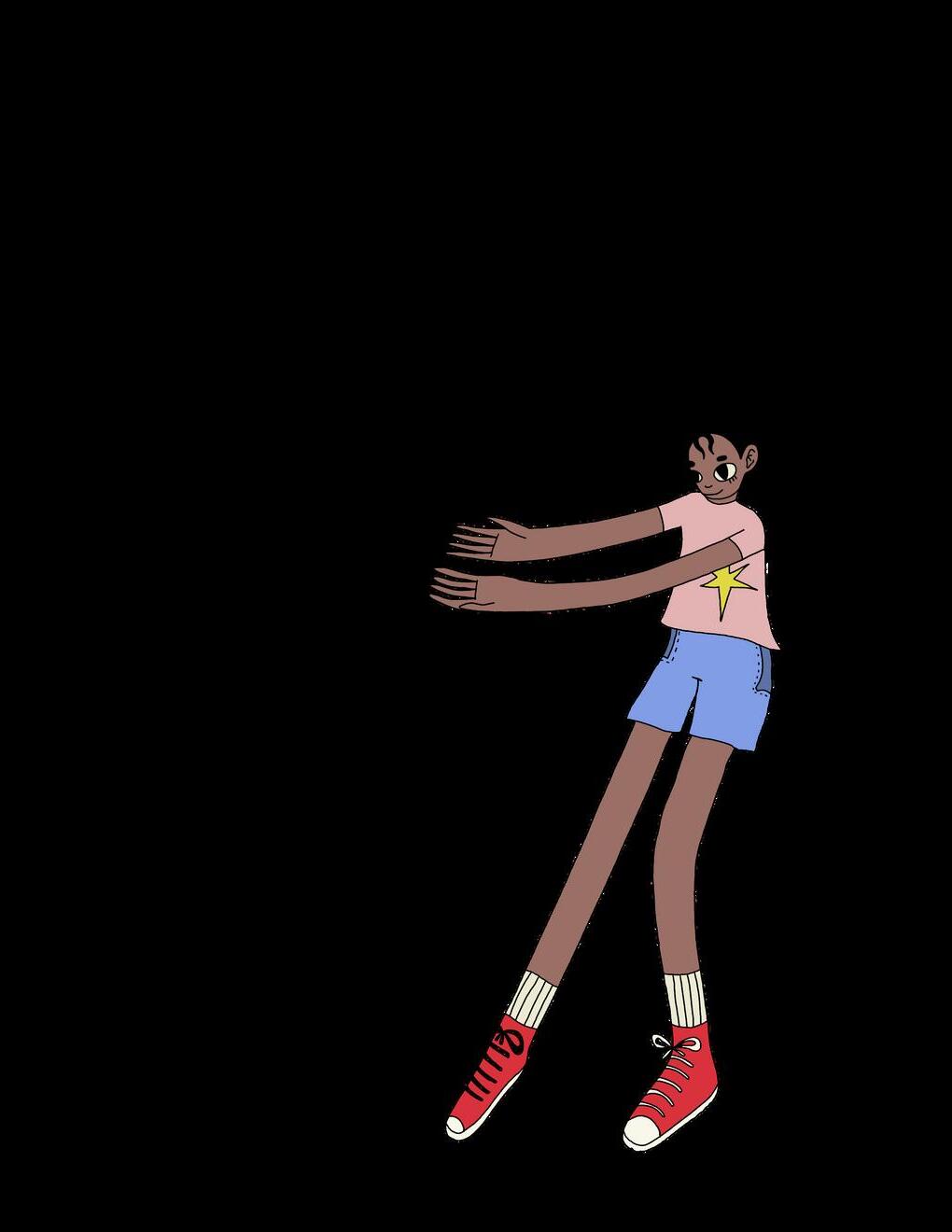
In acknowledging the significance of both lived experiences and professional knowledge, recruiting participants from diverse backgrounds was essential.
The goal was to engage urban and rural youth, ranging from those with little to no experience to highly experienced individuals working in the field of youth work or aligned fields such as social work, healthcare & wellness, research, policy, and more.
A variety of outreach methods were employed, heavily relying on social media, direct communication through emails, and cold-calling to invite Black,

Indigenous, and Afro-Indigenous youth (ages 18-29) from all regions of Canada to participate.
Personal and professional networks were leveraged, including other community members and alumni from past IYR programs. Representation was ensured through outrech to youth in Toronto, the East Coast, Inuit Nunangat (Inuit Land - the Arctic), the West Coast, Northern/Rural communities, youth living both on and off reserve, and Francophone youth.
Through the Community Consultation Sessions, 79 participants were reached in 6 months. Demographic breakdowns can be seen in the charts below:
2023
June
October
November
Ensuring equal representation from Black, Indigenous and Afro-Indigenous youth was a focal point of the planning process, as well as conductring outreach to Inuit youth to strengthen our relationships to Inuit communities in the Arctic:
26%

11

Different questions were asked throughout sessions. Depending on theme, approximately 6 questions per sessions or less were asked. Questions most asked from the pool included:
Table 1: BIS Community Consultation HighlightsWhat does solidarity mean and look like to you?
Why do you think that Black & Indigenous solidarity is important? In your opinion, what are the main roadblocks to Black & Indigenous solidarity?
In your opinion, what are some similarities between Black & Indigenous communities/ experiences/cultures?
What are some ways that Black communities & Indigenous communities residing in ______ spaces can better & more meaningfully engage with one another?
What are some common themes that you think should be explored in Black and Indigenous solidarity programming for youth? Why?
What do you think that Black and Indigenous solidarity programming for youth can achieve?
What kind of engagement have you seen between the Black community and Indigenous communities in on your lands? Would you say there’s a lot of engagement between the two communities or a little? Why do you think that is?
How do you practice radical selfcare as an important aspect of solidarity?
The team recognized the significance of crafting a comprehensive outreach plan and establishing clear objectives was fundamental to a focused and purposeful approach. While compiling lists of organizations provided initial structure, direct engagement with individuals proved to hold greater impact.
Extensive research became integral to this strategy, particularly when exploring unfamiliar territories like Inuit Nunagat (Inuit Land), where individual calls emerged as an effective method for particpant outreach. Leveraging existing connections facilitated meaningful conversations, yet expanding outreach to include individuals from diverse backgrounds across Turtle Island was pertinent.
Despite efforts to incorporate Francophone perspectives, the team encountered challenges in outreach to this demographic Ultimately, the team was not able host a Francophone session due to low registration numbers. Initially facing difficulties in reaching Northern and Inuit communities, the team utilized connections and direct calling to Inuitfocused organizations to ensure adequate engagement and was eventually able to hold a successful and impactful engagemement session.
While the team was able to connect with youth from various Indigenous
Genders
Ciswoman
Non-binary/2-Spirit
Cisman 2-Spirit
Non-binary Transwoman
Ciswoman/2-Spirit
Cisman/2-Spirit
Prefernottosay

identities and places of residence, the team had hoped to engage with more youth from outside of Ontario. In addition, the team noted low levels of engagement from Transgender participants and male-identified participants, highlighting a critical gap in the centering of these essential and impactful voices. Male-identified, women-identifed and genderdiverse/non-conforming people carry crucial roles within both Indigenous and African communities. In recognition of the strength that can be drawn from centering these voices and allowing them to work in synergy towards collective liberation, the team will also focus on increasing engagement with these communties in future endeavours.

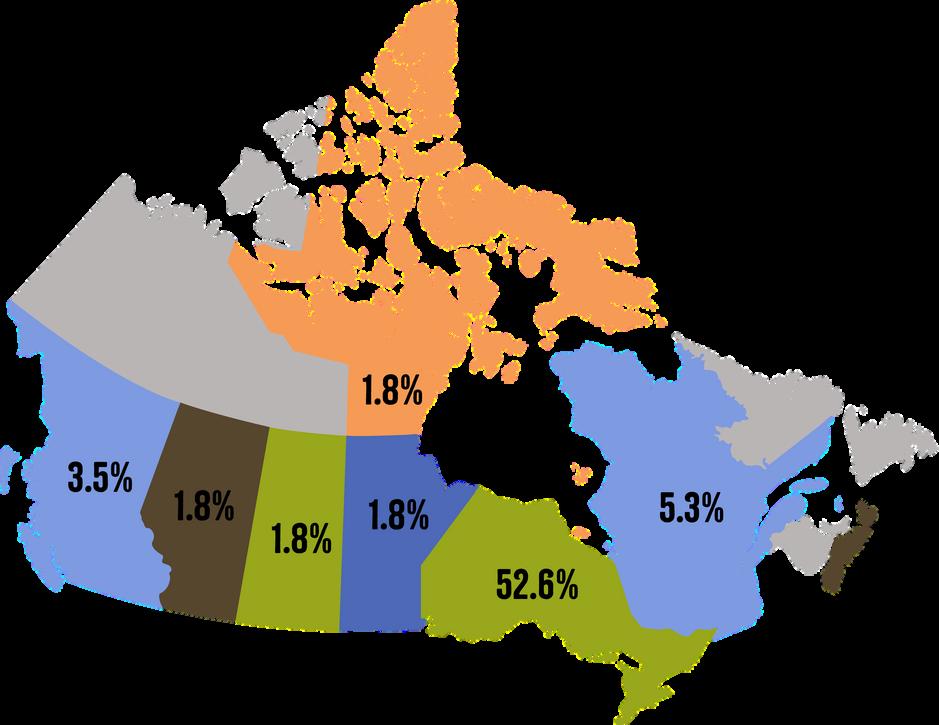
The Community Consultation Sessions were a powerful avenue for important discussions on the pathways to solidarity between Black & Indigenous communities.
In exploring these pathways, key features of the aforementioned communities were identified as possible points of connection between them. Pre-existing and future potential roadblocks to Black & Indigenous Solidarity were discussed as well as action items necessary for the Implementation of a program that responds to the needs of community as identified by community.
Some top realizations included:

Land is both sacred and contested, serving as a mechanism of oppression through colonial theft and exploitation
Reclaiming land and cultural practices is crucial for solidarity building, with meaningful engagement facilitated through land-based healing.
Engagement with the land involves learning about treaties, history, and traditional ceremonies, as well as tapping into the wisdom of Elders for strengthening relationships with the land.
1. Black and Indigenous communities have deep connections to the land, with a rich history of land-based cultural practices predating colonization.
Meaningful engagement between communities comes through landbased healing:
2. Afro-Indigenous Peoples are often excluded from narratives & communities:
Afro-Indigenous youth experience marginalization and exclusion from discussions within Black and Indigenous communities.
Afro-Indigenous youth are often alienated and struggle to embrace their full identities due to the separation between these communities.
Afro-Indigenous youth face discrimination and pressure to conform to singular identities, rather than being accepted for their multifaceted selves.
3. Prioritizing Joy and Rest in Solidarity Work:
Structural racism exposes youth to harsh environments ensuring consistent exploitation
Therefore, creating spaces for joy and rest allows youth to exist freely and dream collectively.
Youth identified joy, rest, and relationship-building spaces as essential components of solidarity work and mechanisms of decolonizing futures
4. Youth are powerful changemakers of society:
Youth play a paramount role in challenging outdated ideologies and establishing structures of accountability.

Accountability is indispensable when fostering long-lasting community relationships
Youth engagement in digital storytelling fosters solidarity and knowledge sharing, through popular social media platforms and other methods of knowledge sharing.
Youth perspective must be highlighted and utilized as a strength for social change.
5. Empowering youth leadership is essential:
Society should honor and support the unique perspective and abilities of youth.
Treatments of youth in society are the reflection of social progress, transforming alienating treatments is at the forefront of social change.
Future programming should support youth leadership qualities and provide multifaceted opportunities for showcasing skills and passions.
In developing a program that establishes long-lasting ties of solidarity and allyship between Black & Indigenous communities, an investigation into pre-existing and potential roadblocks is essential.
Understanding these disconnections at the root begins the process of dismantling them, formulating pathways to solidarity that challenge roadblocks and conquer deeply rooted issues within society
Roadblocks identified by participants include:
1. In societies shaped by colonization and imperialism, identity is formulated outside the individual's body, constructed by social norms. These constructs hinder meaningful interaction due to the pervasive influence of white supremacist ideologies,
External formulations of identity & restrictions of social constructs in meaningful connection:

leading to fear, misunderstanding, and resistance in engaging with other marginalized groups, particularly impacting Indigenous communities who experience compounded trauma from colonization.
The nuances of Black and immigrant identities are often overlooked, leading to misrepresentation, and equating these communities with white settlers rather than recognizing their unique experiences.
2. Alienation of communities due to increased competition for survival: The effects of colonization and imperialism are evident in the concentration of Black, Indigenous, and People of Color (BIPOC) in colonial and settler colonial countries, where capitalism plays a foundational role in driving oppression. Capitalist ideologies foster

competition for survival, alienating individuals and communities and promoting an "us vs. them" mentality.
The scarcity mindset perpetuated by capitalism leads to burnout and diminishes capacity for engagement in movements beyond one's own community. Factors such as increasing costs of living, limited resources, and low wages, particularly affecting marginalized youth, further hinder participation, especially within BIPOC communities facing disproportionately high rates of these social challenges.
3. Lack of/miseducation concerning communities:
Distance created between Black and Indigenous communities often leads to a lack of mutual understanding. False narratives in education exacerbate this, while fear of being misunderstood and lack of mutual physical spaces hinder meaningful engagement, especially post-COVID-19.
Spaces created are often divided, with existing programs allocated for either Black or Indigenous youth,
resulting in Afro-Indigenous youth needing to "choose" an identity in order to participate, and not feeling fully represented in either spaces.
4. Discrimination within and between communities:
Participants discussed the prevalence of anti-Black racism within Indigenous communities, including stereotypes, microaggressions, and colorism against darker-skinned Indigenous, Black, and Afro-Indigenous individuals.
Internalized racism was highlighted as a consequence of colonization, leading to the idolization of Euro-centric standards and hindering celebration of one's own identity. Learned stereotypes from Western societies can perpetuate racism against Indigenous and AfroIndigenous peoples, exacerbating disconnection between these communities
Afro-Indigenous individuals experience intersectional discrimination, deepening their sense of alienation from both communities.
An analysis of key takeaways as well as the roadblocks discussed in the sessions presents the action items identified as fundamental for a successful Black & Indigenous Solidarity program. Fostering meaningful, long-lasting relationships between Black, Indigenous and AfroIndigenous youth, rooted in solidarity, warrants a focus on collective worldbuilding and the reimagination of the future However, for collective worldbuilding for the future to take place, the past (and its effects on the present) must first be learned and understood. Some of the action items & important themes outlined by participants include:
1
Creating a safe and empowering space begins with comprehensive knowledge about the impacts of colonization and imperialism, both locally on Turtle Island and globally:
Participants emphasized the importance of understanding how identity categories are shaped by colonization

and recognized the material effects, such as land theft and the TransAtlantic slave trade. This knowledge enables youth to reject oppressive ideologies, fostering meaningful relationships rooted in mutual respect and understanding, while also honoring the land and its indigenous caretakers.
Learning about Indigenous histories & embracing treaties as central frameworks for community engagement is powerful in solidarity work with Indigenous communities on Turtle Island. In other words, you have to recognize and honour where you are to truly visualize where you are going.
2. Utilizing space in a transformative way is perinent:
Participants emphasized the transformative use of physical spaces for connection, conversation, and community building, providing youth with opportunities to envision and dream.

Land-based healing and engagement were highlighted as crucial for youth to connect with ancestral wisdom and deepen their understanding of identity, culture, and roots.
Indigenous treaties emphasizing care for nature, reciprocity, and mutual care offer valuable lessons in forming community, drawing from the powerful relationships Black, Indigenous, and AfroIndigenous peoples have with the land and cosmos.
3. Facilitatng Connection with Elders: Elders play a vital role in passing down traditional knowledge and ancestral wisdom to youth, guiding them on paths of reclamation and resurgence in their identities and cultures, and breaking toxic cycles of intergenerational trauma. Storytelling serves as a powerful mechanism for knowledge sharing and cultural reclamation, enabling youth to embrace precolonial ways of life and understand shared histories between communities, fostering solidarity and connection.
4. Solidarity is a celebration of similarities AND differences for collective worldbuilding: Black and Indigenous communities share numerous similarities in traditions, cultural practices, and worldviews, including connections to land, drumming, singing, art, traditional food systems, and ceremony. Exploring these commonalities can foster mutual learning and understanding among Black, Indigenous, and AfroIndigenous youth, facilitating exchanges of traditional knowledge
Solidarity and allyship between communities go beyond recognizing similarities; true solidarity involves learning about, respecting, and celebrating differences while striving for equity and liberation. Creating spaces that honor and celebrate the unique gifts of Black, Indigenous, and Afro-Indigenous youth is essential for fostering collective worldbuilding rooted in respect and joy.

5. Collective worldbuilding is impossible without collective healing: Prioritizing collective healing is essential for engaging in collective worldbuilding, emphasizing a strength-based approach to radical self-care, community care, and lateral love.
Joy and rest are crucial components of this healing process, empowering youth to tap into their inner selves, fostering self-understanding, accountability, responsibility, and authentic connections with others.
By prioritizing healing, youth are inspired to reimagine a future beyond social oppression, contributing actively to the creation of a world rooted in solidarity and collective well-being.

The desire to develop solidarity programming for Black, Indigenous and Afro-Indigenous youth is inspired by the necessity to engage and empower youth to dream, to create, to connect and to love together. Youth have the power to change the world; if given the tools to hone their power they will be unstoppable. Initially, the imperative for solidarity between Black, Indigenous, and Afro-Indigenous communities stems from the shared historical and contemporary experiences of oppression, colonization, and exploitation.
The entangled histories of Indigenous genocide and Black exploitation form the foundation of nations like Canada and the United States, necessitating a collaborative response rooted in strength, love, and reclamation. Through our community consultation sessions and a commitment to centering youth voices, we seek to address the intersections of cultural erasure, lack of resources, and the perpetuation of stereotypes, aiming to build connections, empathy, and prosperity within Black and Indigenous communities.
As the program underscores, "Nothing about us without us" highlights the importance of centering the voices and experiences of those directly affected by systemic injustices, reinforcing the interconnected struggles for Black Liberation and Indigenous Sovereignty.
The team took a comprehensive and inclusive approach to gather insights from a diverse range of youth from around Turtle Island, employing different themed consultation sessions to address the specific needs within various demographics across the nation. Prioritizing the well-being of participants, supportive measures were implemented, including holistic supports, culturally rooted opening and closing practices, and somatic exercises.
By emphasizing joy and rest within discussions, the aim was to honor the experiences and knowledge shared by the youth, providing honorariums to acknowledge the importance of their contributions.

The outreach strategy, participant selection, and methodology, including questions posed, were carefully designed to ensure a meaningful exploration of solidarity, unveiling valuable lessons for future engagement efforts.
The Community Consultation Sessions yielded significant insights into the pathways to solidarity between Black and Indigenous communities. Key realizations included the profound connection both communities share with the land, emphasizing the importance of land-based healing and engagement as major starting points for solidarity building.
Additionally, the sessions highlighted the often-overlooked experiences of Afro-Indigenous youth and stressed the significance of prioritizing joy, rest, and collective healing in any solidarity programming.
The action items identified underscore the need for a comprehensive understanding of colonization's impact, fostering meaningful relationships,
creating transformative physical spaces, connecting with Elders and ancestral wisdom, and celebrating both similarities and differences for radical solidarity between communities
Ultimately, collective worldbuilding and healing is crucial for fostering genuine relationships and reimagining a future rooted in solidarity and liberation for both Black and Indigenous communities.
Solidarity between Black & Indigenous communities holds specific importance in part due to the intersections of the histories of oppression of the aforementioned communities. The impetus for the colonization and genocide of Indigenous peoples on Turtle Island is the theft of land and the notion of land as a resource for extraction and development. To commence this development, African people were stolen & enslaved, forced to act as a source of free labour for the colonial project.
Therefore, the entanglement of Indigenous genocide and Black exploitation is the foundation of countries such as Canada and the United States, and the subjugation of these communities is not only interconnected, but continues to take place through the exercising of violence against their bodies by colonial institutions until the present day. Different tools of genocide sought to erase Indigenous identities, languages, cultures, traditions, family structures, food systems, and dehumanizing forms of control and policing lead to ongoing violence in the lives of Black & Indigenous peoples.
Immigrants from all over the world have been brought to this land to further this project, being used as tools for labour and development, whose identities are utilized to spread a false image of harmony and multiculturalism in an attempt to cover up the mass injustices that continue to take place against BIPOC communities. That being said, the nuance of Black identities in relation to this land is also important: descendants of enslaved people continue to live through the effects of slavery and the persistence of anti-black racism. Black immigrants/refugees are subjected to these systems of oppression as their identities are often seemingly aligned.
Descendants of enslaved peoples have a unique positionality in that their ancestors were brought to a foreign land against their will, and cannot be held responsible for the proliferation of the colonial project using their bodies. Immigrants differ in that we hold a shared responsibility to the land and to the people whose lands we reside on.



Oftentimes, stereotypes around Black & Indigenous identities separate communities from one another, as we come to understand one another's identities through the lens of white supremacy. In addition, lack of understanding of the similarities and parallels of the experiences of Black & Indigenous peoples around the world is widespread.
Black, Indigenous, and Afro-Indigenous communities experience a lack of access to resources and to wellness/wellbeing which in turn continues the cycle of disconnection between these communities. The struggle for survival makes it difficult for people to connect and empathize with each other, with the focus in society being placed on individualized success as opposed to community prosperity.
Lastly, histories and examples of Black & Indigenous Solidarity are concealed, contributing to the attempted erasure of Afro-Indigenous identities, where youth are often pushed out of the narrative. Afro-Indigenous youth experience multiple forms of oppression, enduring racism amongst their respective communities as well as from the outside world. Yet, Afro-Indigenous identities are unique, powerful and insightful, as Afro-Indigenous peoples walk through many worlds, all with their own spiritual connections to Mother Earth.
The histories and realities faced by Black, Indigenous, and Afro-Indigenous communities demonstrate the ways in which Black Liberation & Indigenous Sovereignty are interconnected, as one cannot exist without the other, and liberation for one will not actualize without liberation for all.


